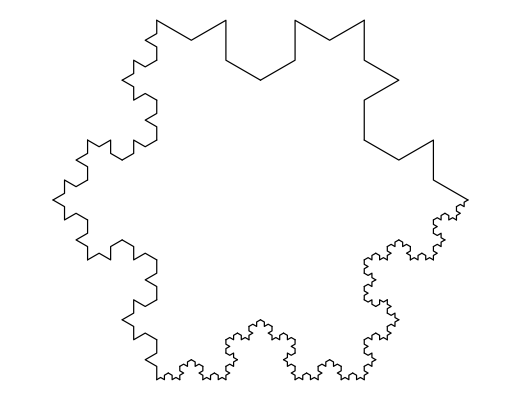

 字體:小 中 大
字體:小 中 大 |
|
|
|
| 2013/07/24 07:06:45瀏覽439|回應0|推薦7 | |
宏本身也可以使用自已,遞回在MetaPost中是可以的。要注意不要形成無窮遞回,所以需要用條件式來控制。這是 Learning MetaPost by Doing 內的例子: beginfig(1); u:=2cm; branchrotation=60; offset:=180-branchrotation; thinning:=0.7; shortening:=0.8; def drawit(expr p, linethickness) = draw p withpen pencircle scaled linethickness; enddef; vardef tree(expr A, B, n, size) = save C, D, thickness; pair C, D; thickness:=size; C:=shortening[B, A rotatedaround(B, offset + uniformdeviate(branchrotation))]; D:=shortening[B,A rotatedaround(B, -offset-uniformdeviate(branchrotation))]; if n>0: drawit (A--B, thickness); thickness:=thinning*thickness; tree(B, C, n-1, thickness); tree(B, D, n-1, thickness); else: drawit(A--B, thickness); thickness:=thinning*thickness; drawit(B--C, thickness); drawit(B--D, thickness); fi; enddef; tree((0,0), (0, u), 10, 8mm); endfig; end; 結果如下:
tree()主要目的就是畫出一條直線(A--B)加上二條分枝(B--C), (B--D)。其中 A rotatedaround( B, degree) 就是把A以B為圓心繞行degree度的pair值。這個pair值再乘上shortenning,所以它距B的距離就會縮短。分枝的寛度則乘上thinning。uniformdeviate是一個運算元,它可產生0到1中間的任意數值。 另外一個是畫出冰花。 u=3cm; vardef koch(expr A, B, n)= save C; pair C; C:=A rotatedaround(1/3[A, B],120); if n>1: koch(A, 1/3[A,B], n-1); koch(1/3[A,B], C, n-1); koch(C, 2/3[A,B], n-1); koch(2/3[A,B], B, n-1); else: draw A--1/3[A,B]--C--2/3[A,B]--B; fi enddef; beginfig(1); z0=(u, 0); z1=z0 rotated 120; z2=z1 rotated 120; koch(z0, z1, 2); koch(z1, z2, 3); koch(z3, z0, 4); endfig; end; 結果如下:
|
|
| ( 興趣嗜好|電腦3C ) |











